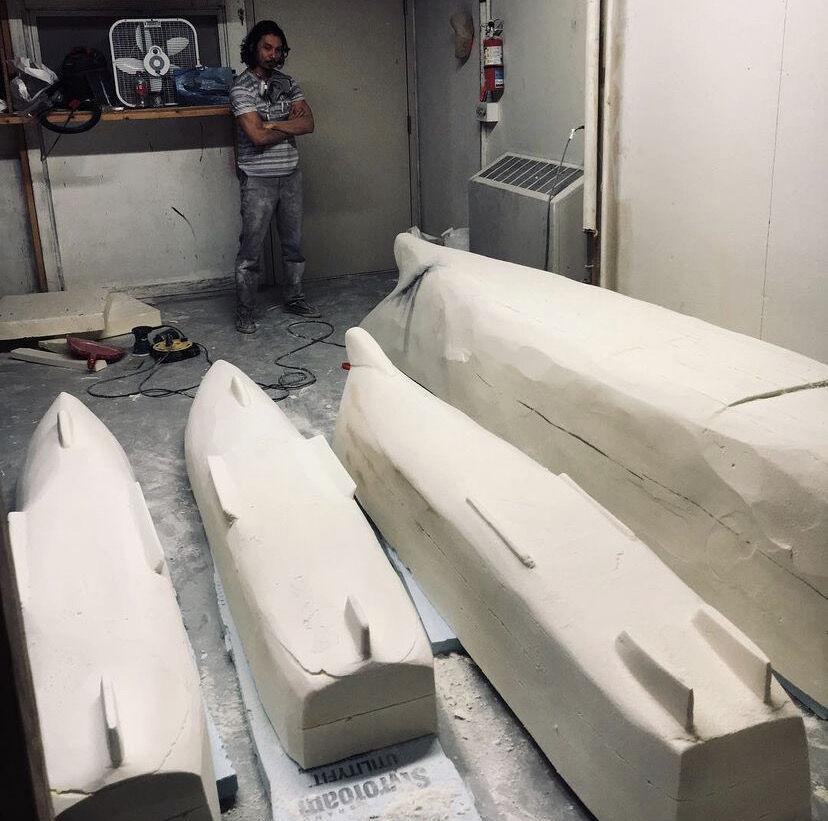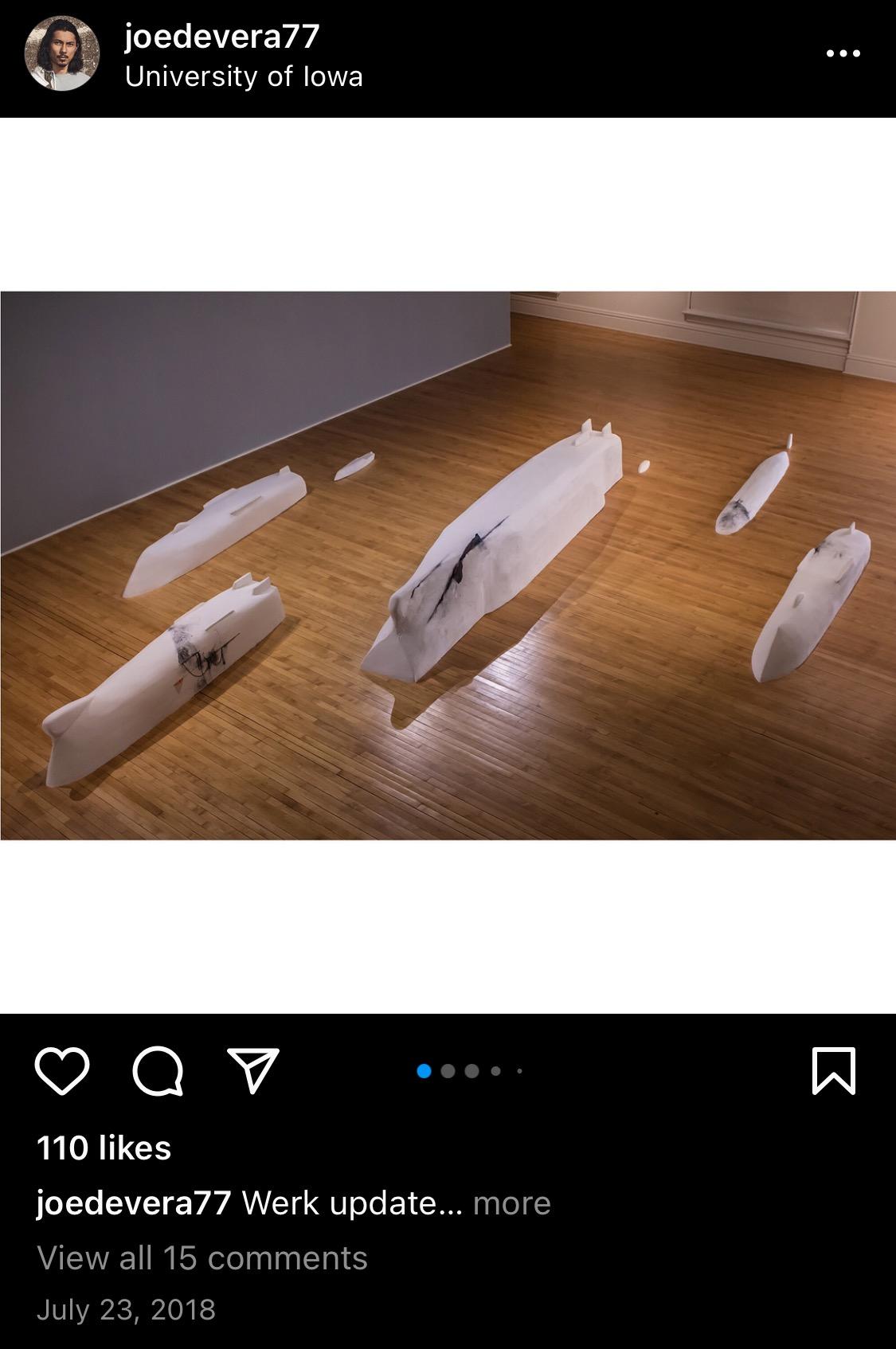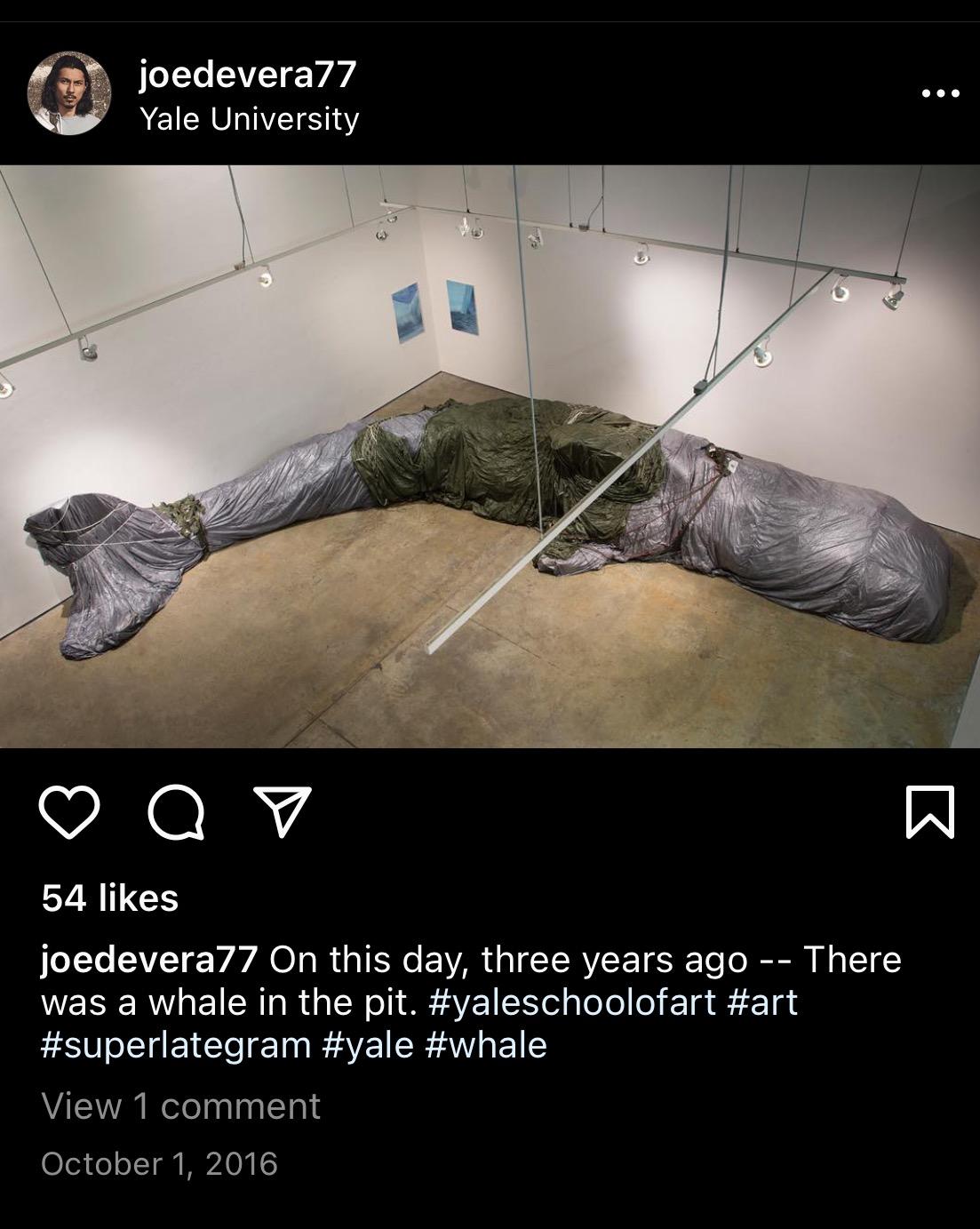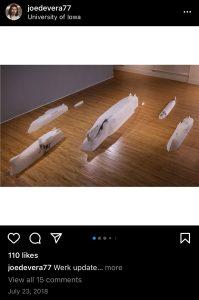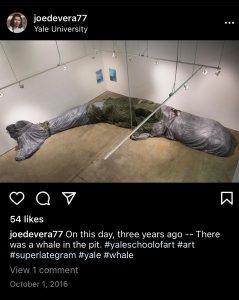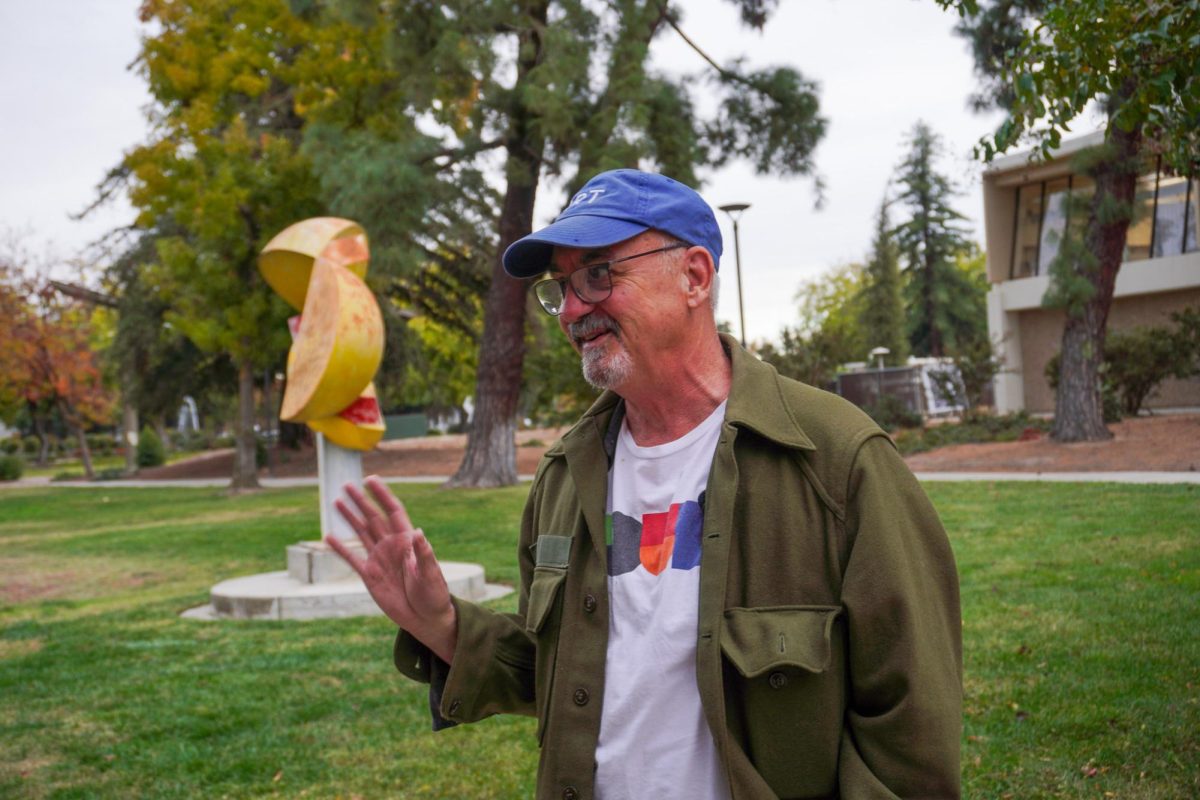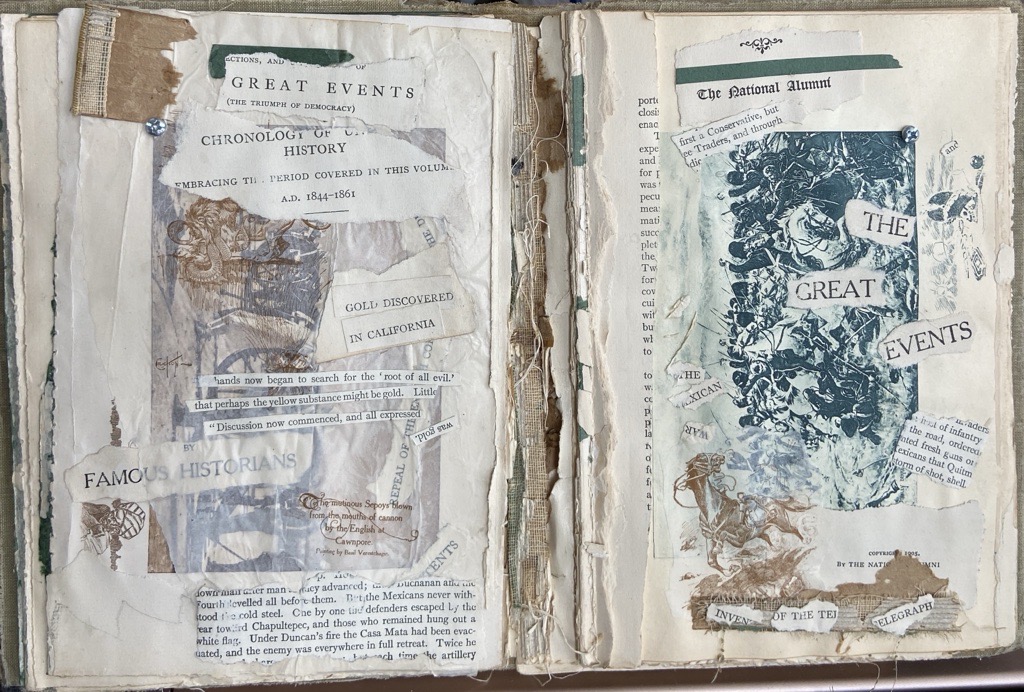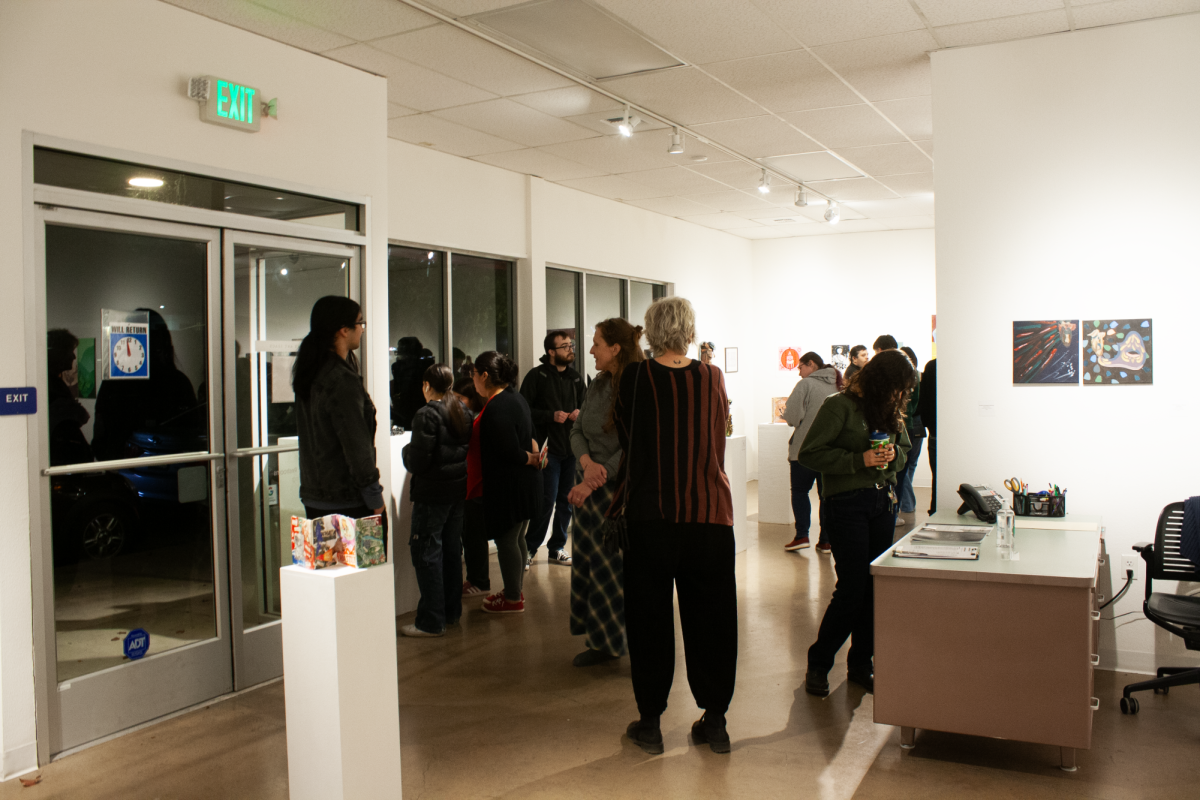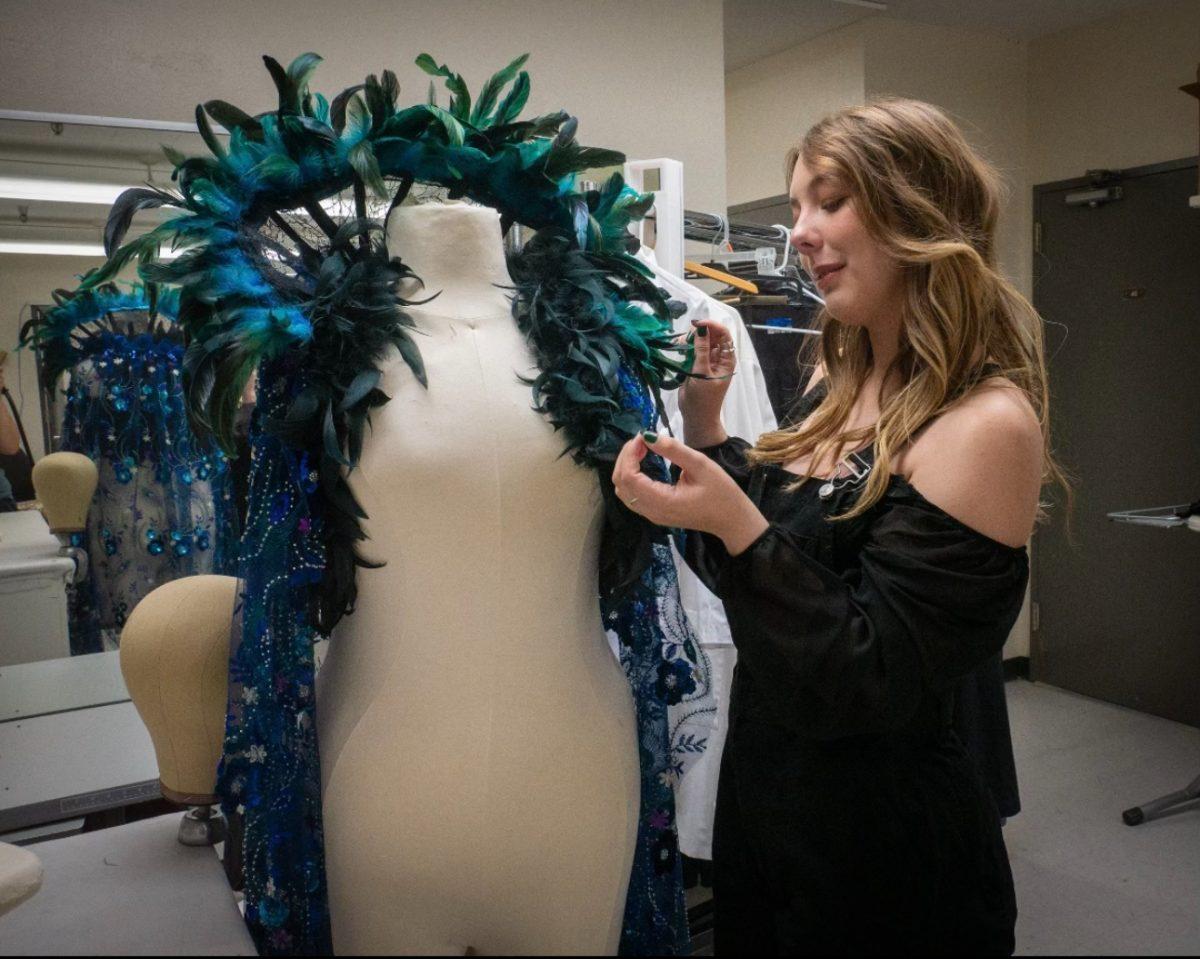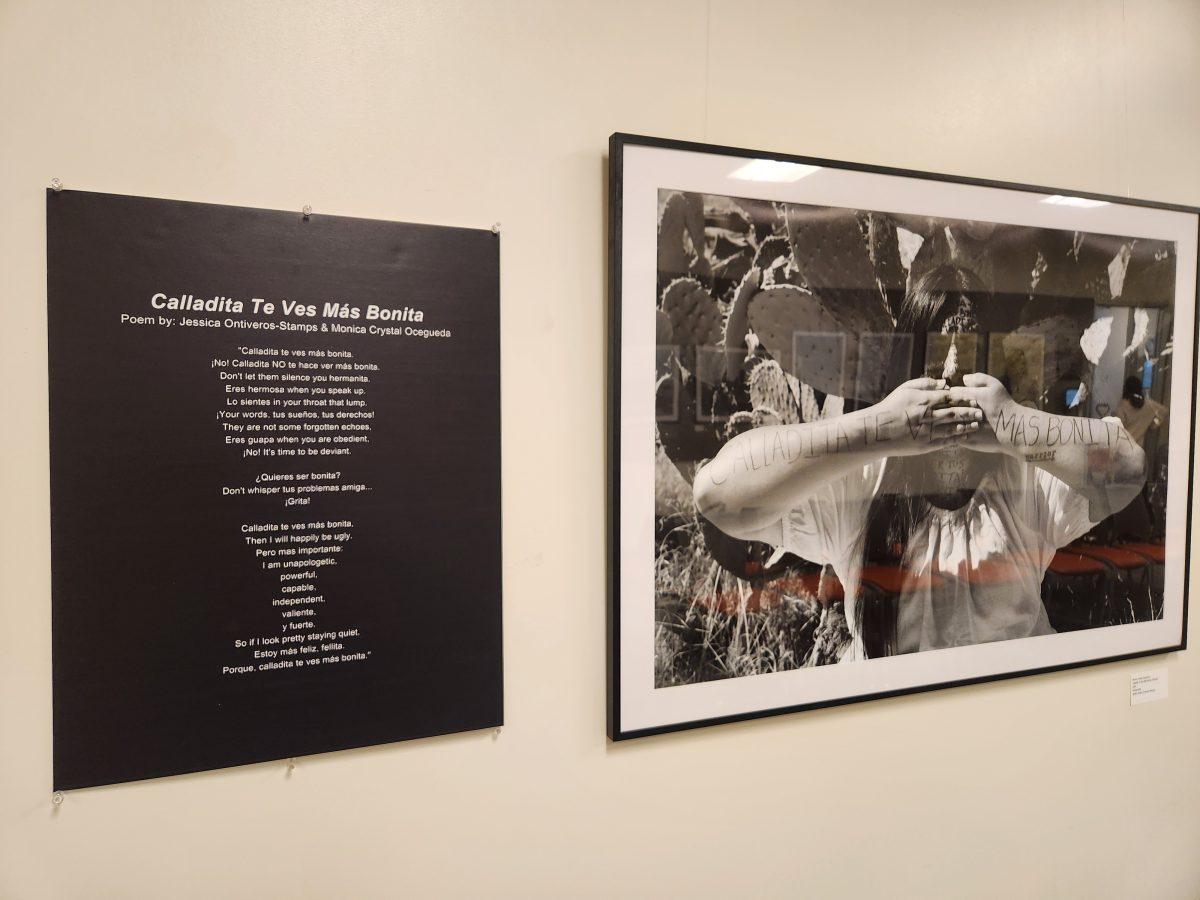On March 29, the Stan State Art department hosted an Artist Talk with artist Jose DeVera. Art majors, faculty, and staff members joined the Zoom meeting to observe DeVera’s work and to hear from the artist himself.
DeVera immigrated with his family from the Philippines to “escape a climate of crushing poverty and government oppression.” After coming to the United States, he enlisted himself in the Marines Corps after high school. He served two combat deployments to Iraq in support of the second Gulf War. DeVera received his BFA in Painting from California State University, Fullerton in 2011 and his MFA in Painting and Printmaking from the Yale School of Art in 2014.
DeVera’s artwork often aims “to clarify the absurd theaters of human tragedy, exploring the possible relationships between historiography and art objects, while simultaneously investigating the cultural networks of mass conflict,” as he describes it. DeVera also describes his work as an “autobiographical observation of power structures and the machines of empire.”
Some awards and residencies DeVera has received include the Self Help Graphics Professional Atelier Invitational (2020), The Vermont Studio Center Full Merit Scholarship (2020), Buckwheat Studios Artist Residency (2019), The University of Iowa Grant Wood Fellowship (2017), the Terra American Art Foundation Summer Fellowship (2016), the Joshua Tree Highlands Art Residency (2015), The Cloud Projects Prize (2015) and The Dave Bown Projects Prize (2014). DeVera’s work was also included in the 111th publication of New American Paintings (2014).
In his paintings and sculptures, DeVera attempts to show connections between history and art. Each of his pieces have their own ways they connect with history.
One piece, titled “Fleet,” DeVera made in Cedar Rapids.
Upside down boats used in the piece are made out of clear stone. DeVera explains that he wanted to play with gravity in this piece. “I didn’t want people to be sure how heavy things were, I wanted them to seem heavy,” he said.
DeVera wanted to leave them questioning. Scale was also one of the things that DeVera wanted to make big but still make it seem small.
In addition, “Fleet” also makes references to the Marine Corps, in which the purpose of the upside down boats is to show the shape of a “loosely formed battle carrier group.” The upside boats were still “very large, about 15 feet but still smaller than the usual that made them look like row boats,” explained DeVera.
Another of DeVera’s pieces is called “34° 13′ 59″ N 116° 25′ 00.9″ W.” This piece of artwork resembles “domestic creatures,” and is meant to “explore the story between the man and beasts.”
DeVera says that “34° 13′ 59″ N 116° 25′ 00.9″ W” shows how people depend on these animals (such as horses and cows) for farming in order to nourish and maintain ourselves.
“34° 13′ 59″ N 116° 25′ 00.9″ W” “is made out of parachutes, sails, wood and found objects,” DeVera says. The piece is placed in an abandoned area at Winter Road in Yucca Valley.
DeVera points out that he knew it was possible for something that was abandoned to have a possibility to be destroyed. As DeVera says, “It was a space where actions were taken by desert’s natural elements and human interaction.” In this case, many people came by and ruined the piece of artwork. DeVera would have to go back and fix it, which led him to understand the vulnerability of his artwork.
Another piece DeVera created was “The Whale,” also known as the “Beast of Burden.” It is made out of a green and grey parachute and a rope in which every item used was found thrown away.
As DeVera created “The Whale,” he realized that it had “capsulated a lot of the things in [his] paintings or work couldn’t do. It sort of retained a gravity that wasn’t there before, but also a weightlessness that wasn’t there before.”
“The Whale” was inspired by the W. G. Sebald novels Rings of Saturn. DeVera connects to the way W. G. Sebald speaks upon “history and silk in which no one knows about it until the end until he puts it all together.”
One of the lines that DeVera mentions that he connected with his artwork was “Representation of history, that it requires a falsification perspective. It goes to clarify that we the survivors see everything from above, everything at once.”
“It cumulated into something strange with this work,” DeVera explains. “This way of working was totally unique. The chance to share compulsion. To the material gathering, to the progress it seemed so immersive that it was beyond what I understood.“
After DeVera made “The Whale,” he started to look at his work more in terms of “a phenomenal instead of a discrete object.”
Check out more of Jose DeVera artwork on his website and Instagram.

